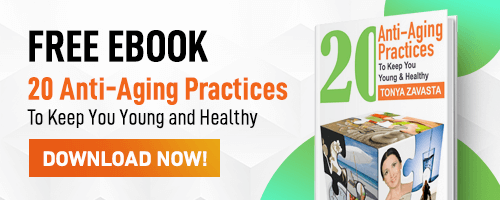Unlocking the Collagen Boost: From Bone Broth to Powder to Wonder Veggie
Published: (September, 2023)
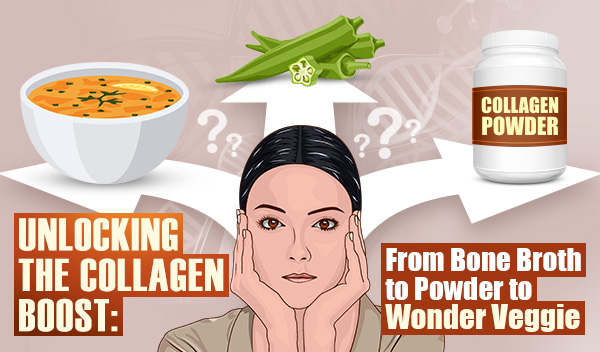

Edible Collagen Powder. Is it good for you?
Here's an email that I received from one of my subscribers: Tonya, I’d like to know your view on edible collagen powder derived from cattle and fish. Good or bad? Friends have been using this for few months, now. They’ve started looking younger and their skin has plumped up.
I had to look up 'edible collagen powder.' How is it made? Here is what I learned… Most collagen powder out there contains what’s called hydrolyzed type-I collagen that’s been extracted from the bones, hides, or hooves of cattle or the scales of fish.
Hmmm…Takes me way back to Moldova, where I was born and lived before coming to America at the age of 33. These days it's a small country in Eastern Europe. I recall challenging times when 'miscellaneous' parts of pigs and cows, such as bones, hooves, ears, and intestines, were more readily accessible than the primary cuts of meat. People made—still make—broth from these parts to which they add vegetables. Bone broth is made by simmering animal bones (usually chicken, turkey, or beef) for 8 to 24 hours in order to extract maximum flavor and what’s thought of as goodness.
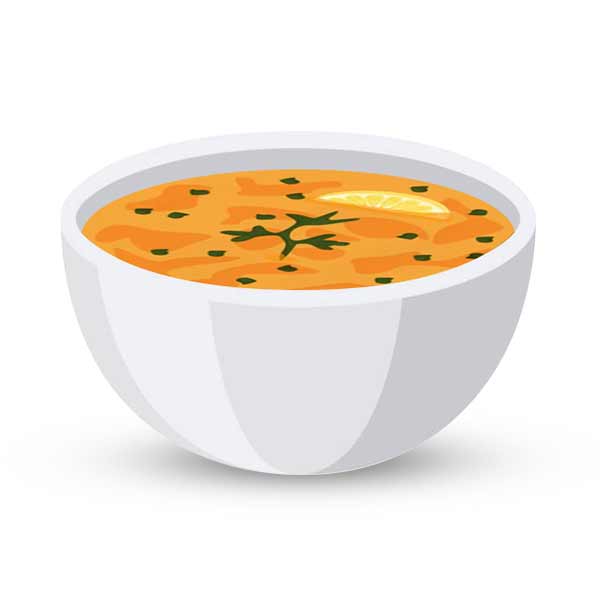
Here's another question I received recently that is directly related to the email above:
I’ve seen the phrase bone broth diet popping up everywhere. What’s your take on the bone broth hype? The claim is that bone broth is full of minerals and collagen that restores the skin and fights wrinkles.
In many cultures around the world, sometimes driven by actual or perceived economic necessity bone broth is a tradition. My mom, my aunts, and almost everyone I know from my home country, have been consuming some variations of bone both throughout their lives. I wish I could say that people who eat this way are especially slim, wrinkle free, and healthy. I can’t. Quite the opposite, indeed. Too many of my old friends and relatives are plagued with arthritis and look every bit their age (and then some).
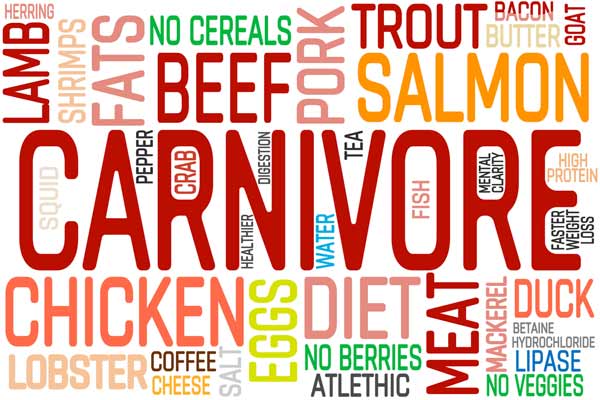
I, too, had an experience with a carnivore diet, in a way. When our family came to America in 1991, money was extremely tight. We had to get creative. We noticed that chicken legs were only 25 cents a pound back then, making them impressively affordable. So, we ate chicken legs every day—often only chicken legs, and several times a day. At that time, my raw food lifestyle was still far in the future. Our chicken leg diet continued for many months because it was all we could afford. It became a culinary drudgery, and later it became one of the reasons giving up meat came very easy to me.
The carnivore diet, it’s well known, may offer short-term benefits, due to calorie reduction. But in the long run, it can lead to serious problems. These high-protein diets can bring elevated blood sugar levels, liver-related problems, and harm to mitochondria. Add in increased cortisol levels and disruptions in fatty acid metabolism and gluconeogenesis.
Also, excessive protein intake negatively affects calcium balance in the body, leading to weakened bones over time and raising the risk of heart disease. And don’t get me started on how it will affect your appearance long term. You can read about it in my book Your Right to Be Beautiful: The Miracle of Raw Foods.
My stance on meat, fish, and all processed protein, for that matter, hasn't changed since I wrote about it in that book 20 years ago. I've had firsthand experience with both the carnivore and bone broth diets, and I remain resolute that they're not for me. Collagen shakes are also not on my list. Will I be impressed with glowing testimonials from followers of these diets? Not likely. I have my own experience to fall on. Through my research and experimentation, I found a dietary plan that works well for me.
Should you, then, blindly follow my path? Certainly not. Trust your own intuition, your own research, your own experience and observations. Decide for yourself. No one can do it for you. The journey is yours, and I’ll respect your decision.
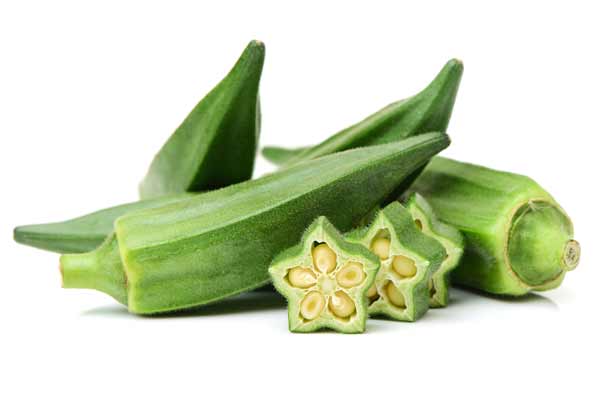
2. The Okra-Collagen Connection: Promoting Skin Health and Overall Well-being.
Collagen is like the skin's best buddy, responsible for its firmness and elasticity.
The Okra Advantage:
This humble green pod is packed with goodies that can make your skin happier than ever and kickstart collagen production.
Rich in Vitamin C: Okra is your go-to source for vitamin C, the antioxidant champ. It's famous for battling those pesky free radicals and dialing down oxidative stress on your skin. Plus, vitamin C is like a conductor for collagen production, helping turn amino acids into collagen proteins.
Vitamin K: Okra doesn't stop at vitamin C; it also boasts vitamin K, a behind-the-scenes hero that helps with blood clotting and overall skin health.
Minerals: We're talking magnesium and zinc here, both found in okra. These minerals are like the construction workers for your collagen, making sure it's strong and your skin stays elastic.
Folate: Okra's got folate too! This nutrient is all about promoting healthy cell division and tissue growth, making sure your skin is in tip-top shape.
Hydration: Okra is practically a watermelon in disguise, containing around 90% water. That means it's a hydration superhero, keeping your skin plump, radiant, and ready to shine.
Is It Good for Me? Take the Test
Testing a new diet we need to ask a question: Is it good for me? Let me suggest this guideline: If you see immediate good results, be somewhat suspicious.
For your body to get “younger,” it needs to go through some form of detox. It’s essential. If something makes you feel good right away—coffee, energy drinks, supplements, wonder diet, drugs of any kind—be aware: You might have to pay for it later.
On the other hand, really good results always come with some cost in discomfort. Remember your first yoga class? After the class you ached all over. Even more so with a hot yoga class, because it takes you through a more intense detox. Likewise, you start a raw food diet, for sure you’ll go through some detox symptoms there, too. Rejoice! Read my book Raw Food and Hot Yoga for inspiration.
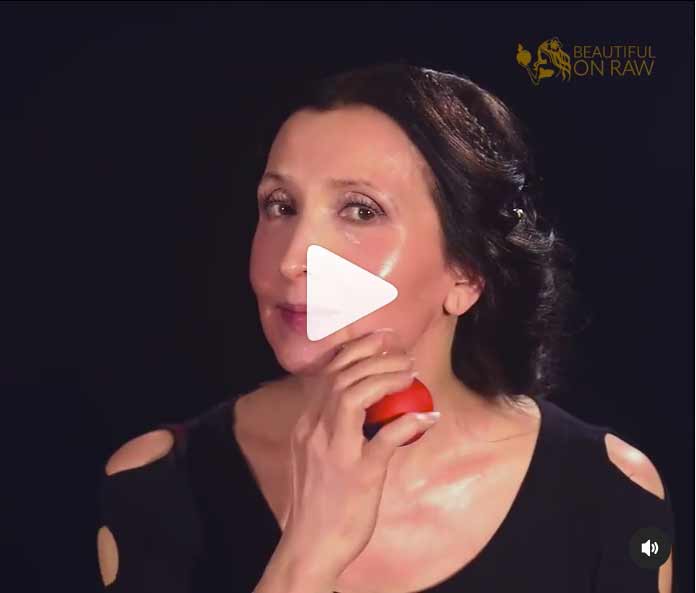
You're starting a cupping massage program (which, in my view, is the best practice for boosting your skin's collagen). You may experience some bruising, but you need to keep doing it until your capillaries become so elastic that bruises no longer appear.
You start dry brushing your face, you’ll get a lot of dead cells shedding off your face. You start Strigil skin scraping, you might get breakouts. Good—it means you’re getting the gunk out, and you’re on your way to exceptionally clear skin.
With any program of natural healing, there’s always some getting-worse, before you feel the getting-better. Stay consistent and don't give up. Remember that with the practices mentioned above, you're training your skin to become more resilient and better equipped to withstand the effects of aging.
